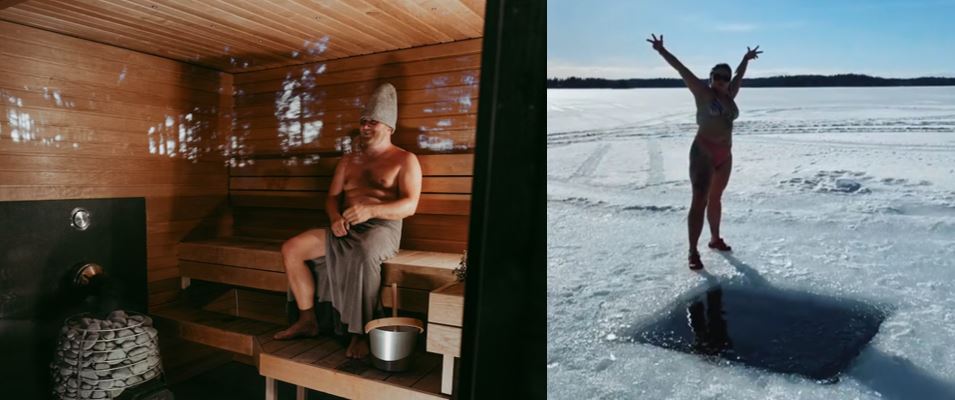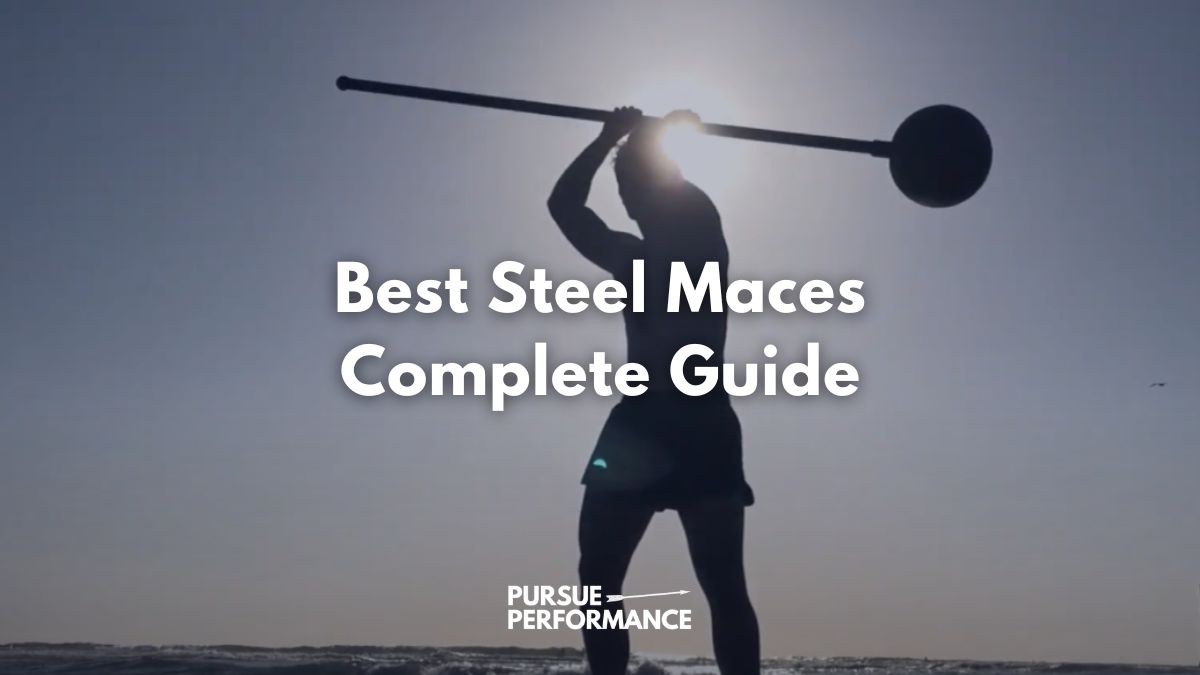The sauna cold plunge routine is a massive health unlock for anyone who needs access to a powerful natural tool for recovery, health, and wellness.
In this post, we will discuss the key aspects of this routine, examining their benefits, risks, and ways to integrate them into your daily routine.
Let’s dive in!
Short Answer: Popular weekly routine for
| Day | Activities |
|---|---|
| Monday | Sauna (15 min) → Cooldown (5 min) → Cold plunge (2 min), Repeat 2-3 times, End with cold plunge |
| Tuesday | Rest Day |
| Wednesday | Sauna (15 min) → Cooldown (5 min) → Cold plunge (2 min), Repeat 2-3 times, End with cold plunge |
| Thursday | Rest Day |
| Friday | Sauna (15 min) → Cooldown (5 min) → Cold plunge (2 min), Repeat 2-3 times, End with cold plunge |
| Saturday | Rest Day |
| Sunday | Sauna (15 min) → Cooldown (5 min) → Cold plunge (2 min), Repeat 2-3 times, End with cold plunge |
Top Picks
Best cold plunge: Cold Pod Ice Bath XL
Bestsauna towel: Gaiam Stay Put Yoga Towel
Bestsauna hat: Eden WoolSauna Hat
Best electrolytes: LMNT
Understanding the Concept of Heat Therapy
Heat therapy, also known as thermotherapy, involves exposing the body to high temperatures to stimulate health benefits.
Saunas, particularly Finnish and infrared saunas, are a common method for heat therapy.
They can promote detoxification, enhance blood flow, ease muscle pain, and support cardiovascular health.
Exploring the Benefits of Sauna

Regular
The intense heat from a
Further, the heat encourages vasodilation, leading to improved circulation and potentially lower blood pressure.
Saunas can also be a great way to reduce stress and promote a sense of relaxation and well-being.
Introduction to Cold Plunge
Cold plunge or cold immersion is a form of cold therapy where you immerse your body in cold water.
This can range from an ice bath at home to specialized cold plunge pools at wellness centers.
The cold temperature stimulates vasoconstriction, essentially providing a ‘shock’ to your system, and then vasodilation when you warm up again.
Related: Cold Plunge and Ice Bath Statistics
Uncovering the Advantages of Cold Plunge
The benefits of cold plunge therapy are numerous.
They include reduced muscle inflammation, improved mood, enhanced immune function, and better sleep quality.
Cold plunges can also stimulate brown fat activity, which plays a crucial role in burning calories and maintaining body temperature.
- 20% larger vs. average
- Multi-layer insulation
- Thermal protective cover
- Holds up to 120 gallons
- Option to add a chiller pump
- Includes a carrying backpack
- Small, portable & foldable
- Affordable
- Insulated
Why Combine Sauna and Cold Plunge: Hot-Cold Contrast Therapy
The
By alternating between heat (sauna) and cold (cold plunge), you encourage vasodilation and vasoconstriction.
This ‘pumping’ action can improve your lymph and blood circulation, helping remove waste from tissues and deliver oxygen and nutrients more efficiently.
Related: Creatine and Sauna
Basic Sauna Cold Plunge Routine

While there isn’t a one-size-fits-all routine, a basic
Routine Overview
- Begin with a 15-minute
sauna session - Followed by a quick cool-down, then a 2-minute cold plunge
- Repeat this cycle 2-3 times, ending with a cold plunge
This sequence can vary depending on individual tolerance, fitness level, and personal preference.
Related: Joe Rogan Sauna: Type, Routine, and Benefits
Advanced Techniques in Sauna Cold Plunge

As you grow more comfortable with the
Each individual is unique, and while some people may be satisfied with the basic routine, others may desire more intensity.
Related: What to Wear in a Sauna
Increasing Duration
One advanced technique involves gradually increasing the duration of your
While beginners might start with a 15-minute
The
Related: Why Don’t I Sweat in The Sauna?
Shorter Rest Periods
Another technique is reducing the rest time between the
The shorter the interval, the sharper the contrast your body experiences.
This rapid switch from hot to cold induces a more potent vasodilation and vasoconstriction effect, which can optimize the circulation benefits.
Additional Cycles
You can also add more cycles to your routine. Instead of the basic two to three cycles of hot-cold contrast therapy, you might increase this to four or even five cycles.
More cycles can enhance the benefits, as the repeated change from heat to cold further stimulates your body’s physiological responses.
Combination with Breathing Techniques
Some advanced practitioners combine their
This can include deep, controlled breathing during the
These techniques can increase your body’s oxygen uptake and potentially enhance the benefits of the routine.
Related: Somatic Breathwork (Explained)
Important Tips for Sauna Cold Plunge Routine
Successfully incorporating a
The following tips can help you maximize the benefits while minimizing potential risks.
Related: Inflatable Cold Plunge: Complete Buying Guide
Stay Hydrated
Hydration is crucial for any wellness routine, especially for hot-cold contrast therapy.
The
Drink plenty of water before starting the routine, and consider rehydrating with water or an electrolyte-rich drink afterward.
- Flavored with coconut water (no sugar)
- Optimal sodium to potassium ratio (2:1)
- Easy travel packaging
Don’t Rush
Each stage of the
Hurrying through these stages can not only diminish the therapeutic effects, but can also put unnecessary stress on your body.
Take your time in each phase, allowing your body to adapt and respond to the changing conditions.
Prioritize Safety
Ensure you have a firm grip when entering and exiting the
- Protect your yoga mat in the sauna
- Anti-slip safety texture
It’s also a good idea to have a buddy system, especially if you’re new to this routine or increasing its intensity.
Related: Joe Rogan Grip Strength Recommendations [2024]
Recognize Your Body’s Signals
While the
Note: If you start to feel dizzy, nauseous, or experience sharp pains, it’s essential to stop the routine.
These could be signs that your body is being pushed beyond its limits.
Start Slow and Gradually Increase
If you’re new to hot-cold contrast therapy, start with shorter
Gradually increase the duration and intensity as your body becomes accustomed to the routine.
This gradual approach can help your body adapt to contrasting temperatures and minimize potential risks.
Cool Down and Warm Up Properly
After a cold plunge, allow your body to warm up naturally. It’s important not to rush this process, as your body needs time to return to its regular temperature.
Likewise, cool down after a
This can be as simple as sitting in room temperature for a few minutes.
Related: Sauna Stretches To Boost Flexibility And Recovery
Consistency is Key
Like most wellness practices, consistency is key with
Aim to make it a regular part of your week while listening to your body’s needs.
Over time, you might find that this routine not only becomes easier but also more beneficial.
Precautions to Consider
While a
Individuals with the below conditions should exercise caution and chat with a healthcare professional before starting this protocol:
- Heart conditions
- High blood pressure
- Pregnant
Conclusion: Your Path to Health and Recovery
At Pursue Performance, we highly recommend starting a
We are big believers in the restorative and mental health benefits.
A
By carefully integrating this routine into your wellness regimen, you can experience significant benefits.
FAQ
What is the best routine for sauna and cold plunge?
The best routine can vary depending on individual tolerance, fitness level, and personal preference.
A basic routine might involve a 15-minute
This cycle can be repeated 2-3 times, ending with a cold plunge.
How many times should you sauna and cold plunge?
Ideally, you should aim for 2-3 sessions a week. However, this can vary depending on individual tolerance and fitness level.
Is it good to go from sauna to cold plunge?
Yes, alternating between a
Should you sauna before or after cold plunge?
You should begin with a
Is it OK to cold plunge every day?
While some people can tolerate daily cold plunges, it’s important to listen to your body and adjust as necessary. If you’re new to cold plunges, start slowly and gradually increase the frequency.
Can you cold plunge too much?
Yes, excessive cold plunging can put stress on the body and potentially lead to hypothermia. It’s essential to listen to your body and not push beyond your limits.
Is a 2 minute cold plunge good?
Yes, a 2-minute cold plunge can offer significant benefits, including reduced muscle inflammation and improved mood. However, the duration can be adjusted depending on individual tolerance and preference.
Why is a 2 minute cold plunge good for you?
A 2-minute cold plunge stimulates vasoconstriction and vasodilation, improving circulation, reducing muscle inflammation, and enhancing mood.
What to do immediately after cold plunge?
After a cold plunge, it’s important to warm up slowly. You can do this by wrapping up in a warm towel or robe, drinking a hot beverage, or doing some light exercise to increase circulation.
Why am I so exhausted after cold plunge?
A cold plunge is a form of stress on the body, which can result in temporary fatigue. However, regular practice can help your body adapt, and you should experience less fatigue over time.
What time of day is best for cold plunge?
The best time of day for a cold plunge can vary depending on personal preference. Some people prefer morning plunges to kickstart their day, while others prefer evening plunges to aid sleep.
What are the negatives of cold plunge?
Potential negatives of cold plunges include temporary discomfort, initial fatigue, and the risk of hypothermia if not performed correctly.
Should you shower after cold plunge?
It’s not necessary to shower immediately after a cold plunge. However, if you feel uncomfortable or if the water used in the plunge was treated with chemicals, you might choose to shower.
Do cold plunges increase testosterone?
The research on testosterone changes after cold immersion is mixed, with some studies finding modest increases and others finding no impact.
How long is too long in cold plunge?
The ideal duration for a cold plunge can vary, but most experts recommend between 2-10 minutes.
Spending too long can stress the body and potentially lead to hypothermia.
How many days a week should you cold plunge?
Aiming for 2-3 sessions a week is a good starting point.
However, this can be adjusted depending on individual tolerance and fitness level.
Are cold plunges anti-inflammatory?
Yes, cold plunges can reduce inflammation by constricting blood vessels and decreasing metabolic activity, which reduces swelling and releases endorphins.
Do you burn calories in cold plunge?
Yes, cold plunges can stimulate brown fat activity, which plays a crucial role in burning calories and maintaining body temperature.













